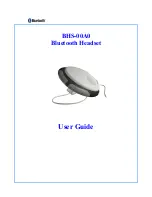
136
CE 450 IP R / IM-Ost english / A31008-M1817-R601_1-7619 / glossary.fm / 02.03.2007
Ve
rs
ion 2,
21
.12.
2006
Codec
Coder/decoder
Codec is a procedure that digitises and compresses analogue voice before it is sent via
the Internet and decodes – i.e. translates into analogue voice – digital data when voice
packets are received. There are different codecs, with differing degrees of compression,
for instance.
Both parties involved in the telephone connection (caller/sender and recipient) must
use the same codec. This is negotiated between the sender and the recipient when
establishing a connection.
The choice of codec is a compromise between voice quality, transmission speed and the
necessary bandwidth. A high level of compression, for example, means that the band-
width required for each voice connection is low. However, it also means that the time
needed to compress/decompress the data is greater, which increases execution time for
data in the network and thus impairs voice quality. The time required increases the delay
between the sender speaking and the recipient hearing what has been said.
Consultation call
You are on a call. With a consultation call, you interrupt the conversation briefly to
establish a connection to another participant. If you terminate the connection to this
participant immediately, then this was a consultation call. If you switch to and fro
between the first and second participants, it is called
CW
Call Waiting
.
D
DHCP
Dynamic Host Configuration Protocol
Internet protocol which handles the automatic assignment of
. The protocol is made available in the network by a server. A DHCP server
can e.g. be a router.
The phone contains a DHCP client. A router that contains a DHCP server can assign the
IP addresses for the phone automatically from a defined address block. The dynamic
assignment means that several
although they use it alternately and not simultaneously.
With some routers you can specify that the IP address for the phone is never changed.
Displayed name
VoIP provider feature. You can specify any name that is to be shown to the other party
call instead of your phone number.
DMZ
Demilitarised Zone
DMZ describes a part of a network that is outside the firewall.
A DMZ is set up, as it were, between a network you want to protect (e.g. a LAN) and an
insecure network (e.g. the Internet). A DMZ permits unrestricted access from the Inter-
net to only one or a few network components, while the other network components
remain secure behind the firewall.
















































